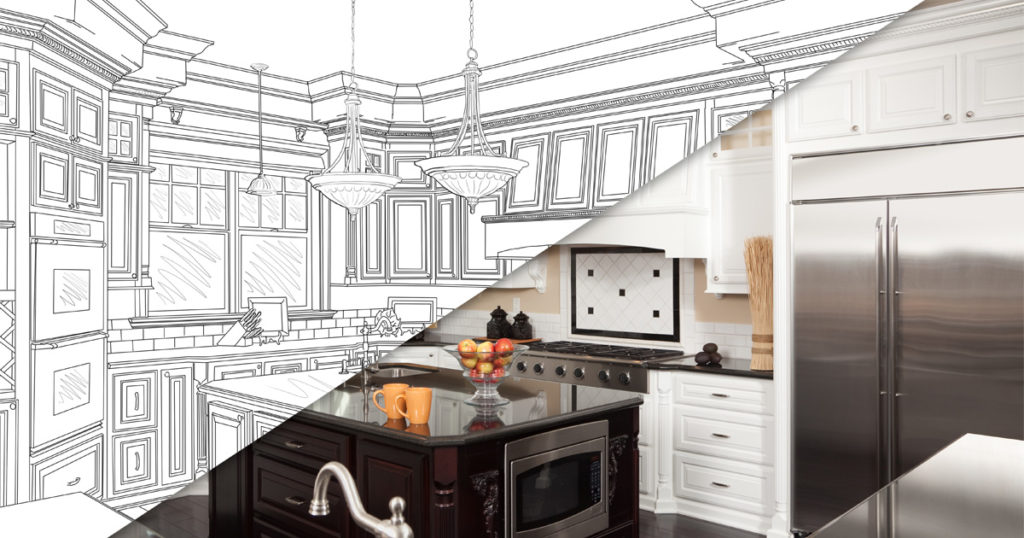You know that it can be very easy to feel sometimes like your life is not your own and that the military makes all the choices for you when it comes to where you live. And if you’ve got a quick turnaround situation, where you must be in a new town and new place very quickly due to a PCS, that can be true. You pick from what’s available to you that will be ready in time. But when the pace of military life has slowed down and you’re ready to consider your forever home (or at least a home you can stay in for longer than a couple of years), you’ll find you have greater freedom when it comes to buying your home. Freedom like getting to choose between whether you buy a fixer upper or build a new house.
People can oversimplify what’s involved in making that choice, reducing it to a matter of whether you’re handy or fond of DIY projects. But the decision can be more involved than that. We’ll help you determine what is the best fit for you.
Quality of Materials: Have you ever heard someone older than you complain, “They just don’t make things like they used to?” This may be part nostalgia, but it has some truth. There was a certain degree of craftsmanship involved in the way things were made and built in the past. And materials used and quality of construction in older homes are known for having been more solid/substantial/durable than what is used now. Of course, you can mitigate this problem easily enough in a new build if you have the financial means to choose higher-end materials. But that choice will mean having to factor that additional expense into your number crunching.
Safety and Health-Related Issues: A new build means that everything will be up to current building codes. You won’t be dealing with any concerns about lead, asbestos, mold, and the like. With a fixer upper, you’re not guaranteed that you won’t have to remediate safety and health issues. Old wiring, asbestos removal, etc. may be unexpected surprises that require prompt attention. And while your home inspection should reveal some of these problems up front, that same inspection won’t necessarily find everything that could be a cause for concern. Remedying safety and health-related issues means added expenses when purchasing a fixer upper.
Character and Customization: Fixer uppers, and older homes in general, tend to have “charm.” They can be unique, quirky, or historic and already have a story to tell of the people who’ve lived in them before. Fixer uppers are typically in neighborhoods where there’s not construction going on throughout the development. They’ve got established yards and gardens and trees that have grown to maturity. A new build, particularly if it’s one in a development of new builds, is more likely to be “cookie-cutter.” Perhaps there are a small handful of designs to choose from, and your house will look very much like those of your neighbors. If trees and gardens have been planted, which may not be the case if you’re starting with an open lot, they’ve had less time to mature and you’re not likely to have a lush landscape any time soon.
A fixer upper is also as customizable as you want it to be, unless you’re buying a home that has been determined to be historically or architecturally significant. Homeowners of these properties will find themselves with strict guidelines regarding what they can do to the property. If you’re considering a historic fixer upper, you’ll want to check your local/state laws on owning and renovating historic structures before you make a decision, particularly if you have a specific vision or aesthetic for your home, to make sure you’ll be allowed to do what you’re hoping to do. But if that fixer upper is not a protected building, you’ve got free reign to make your vision come to life—however one of a kind that vision is.
The same is not necessarily true with a new build, particularly in a development setting. You’ll likely find yourself with a limited number of choices you can make about your home: a handful of bathroom layouts, a few tiers of appliance choices, a sampling of countertops, etc. And each of those choices will impact your pricing. Now, if your new build is on an empty lot of its own, you’ll have more opportunity to customize your home and lots of decisions you’ll need to be prepared to make (a good thing if you like having lots of choices and a problem of its own if you’re prone to decision fatigue.)
Pricing: There most likely won’t be a lot of wiggle room on the pricing of a new build, so you’ll need to be prepared to come close to the asking price. This isn’t the case with a fixer upper, particularly if it has been on the market for a while or isn’t receiving offers close to asking price. You can expect to have room to negotiate for that home. Keep in mind, though, that you can also expect to have a steady stream of unexpected (and often costly) repairs that may offset any money you saved in negotiating the price you pay for it. It can be more difficult to budget with a fixer upper and easier to have a budget derailed by an unexpected problem that pops up in an older home.
There are other variables with pricing to consider. Like if you’re ready to tackle a chunk of the work yourself or if you plan to bring in professionals. Or if you intend to take on all the repairs and modifications at once or over time (an option with a fixer upper, but not with a new build). Similarly, your taste and aesthetic will impact how much you end up spending, particularly if that taste includes high-end materials and special features. And let’s be really honest—you’ll need to add cushion to your budget for both a new build and a fixer upper because there will, no matter how well you plan, be surprises of the less-than-wonderful variety.
But at the end of the day, regardless of whether you choose a new build or a fixer upper, you’ll be part of creating a home of your dreams. And that’s a freedom few can appreciate more than a military family that’s been going where they’re ordered and living where they’re told who can finally set down some roots.




